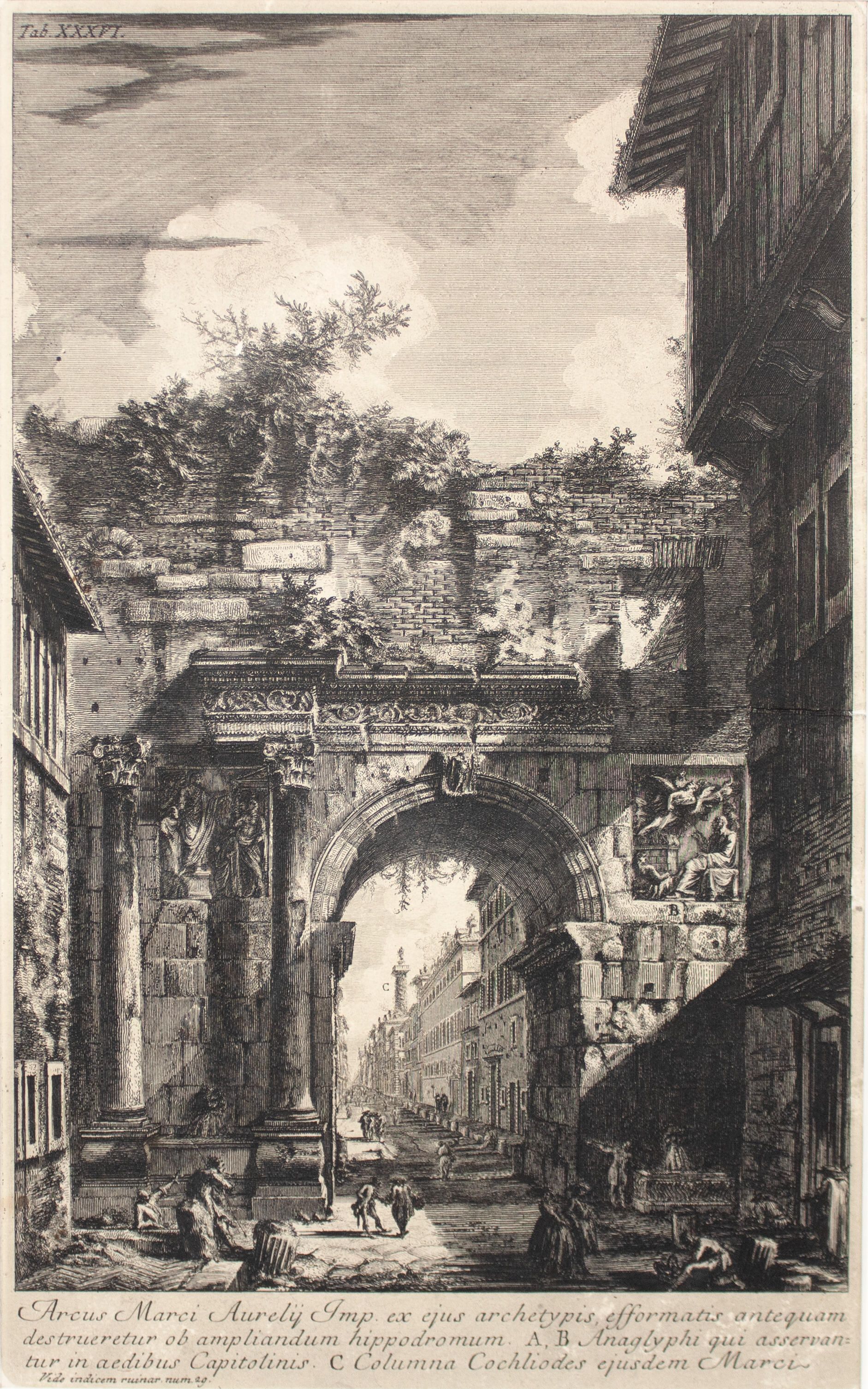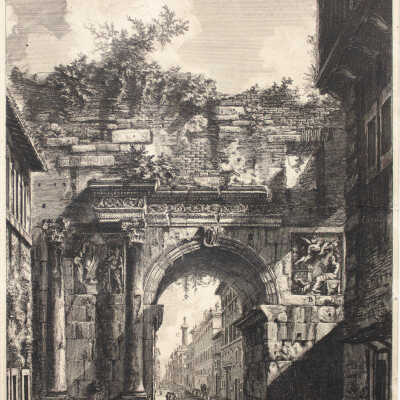Label Type
Cultural/Historical ContextLabel
The Arch of Marcus Aurelius from The Campus Martius of Ancient Rome, c. 1762
Giovanni Battista Piranesi (Italian, 1720–1778)
Etching
Inscriptions: below image, “Arcus Marci Aurelij Imp. Ex ejus archetypis, effprmatis antequam / destrueretur ob ampliandum hippodromum. A, B Anaglyphi qui asservan- / tur in aedibus
Capitolinis. C Columna Cochliodes ejusdem Marci / Vide indicem ruinar, num. 2g.”
Giovanni Battista Piranesi was trained originally as an architect, but quickly took up printmaking. After being appointed to the retinue of Venetian ambassadors to Pope Benedict XIV (1675–1758) as a draftsman, Piranesi left Venice and traveled to Rome. Here, Piranesi continued to execute prints that depicted ancient Roman structures. In this etching Piranesi depicts the ancient Arch of Marcus Aurelius, 163 CE, in a manner that recalls past histories and glories of Rome. This arch, built in present-day Libya, celebrates and glorifies Roman imperialism under the emperor Marcus Aurelius. In this print, the arch’s scale is greatly exaggerated, as apparent in its contrast to the tiny figures below.
Piranesi was also renowned in the way he used perspective and light to create mood. Notable in his depiction of texture, Piranesi depicts the contrasting surfaces of bricks and foliage within the image. This etching was part of Piranesi’s series The Campus Martius of Ancient Rome. This series set out to record the historical pattern of urban change of Rome. By including topographical maps, city plans, and views of monuments, this series exemplified Piranesi’s training as both architect and printmaker.
Having large commercial ambitions, Piranesi aimed his prints at the Grand Tourists that traveled through Italy. They often bought Piranesi’s etchings as souvenirs of their journeys. The Campus Martinus represents the progress Rome has made as a city and empire, and this image of the Arch of Marcus Aurelius exemplifies the political domination of Rome over foreign lands.
The Printing Museum, Bader Collection
2000.013.31Label Type
Object LabelLabel
The Arch of Marcus Aurelius from The Campus Martius of Ancient Rome, c. 1762
Giovanni Battista Piranesi (Italian, 1720 – 1778)
Etching
The Printing Museum, Bader Collection
2000.013.31
